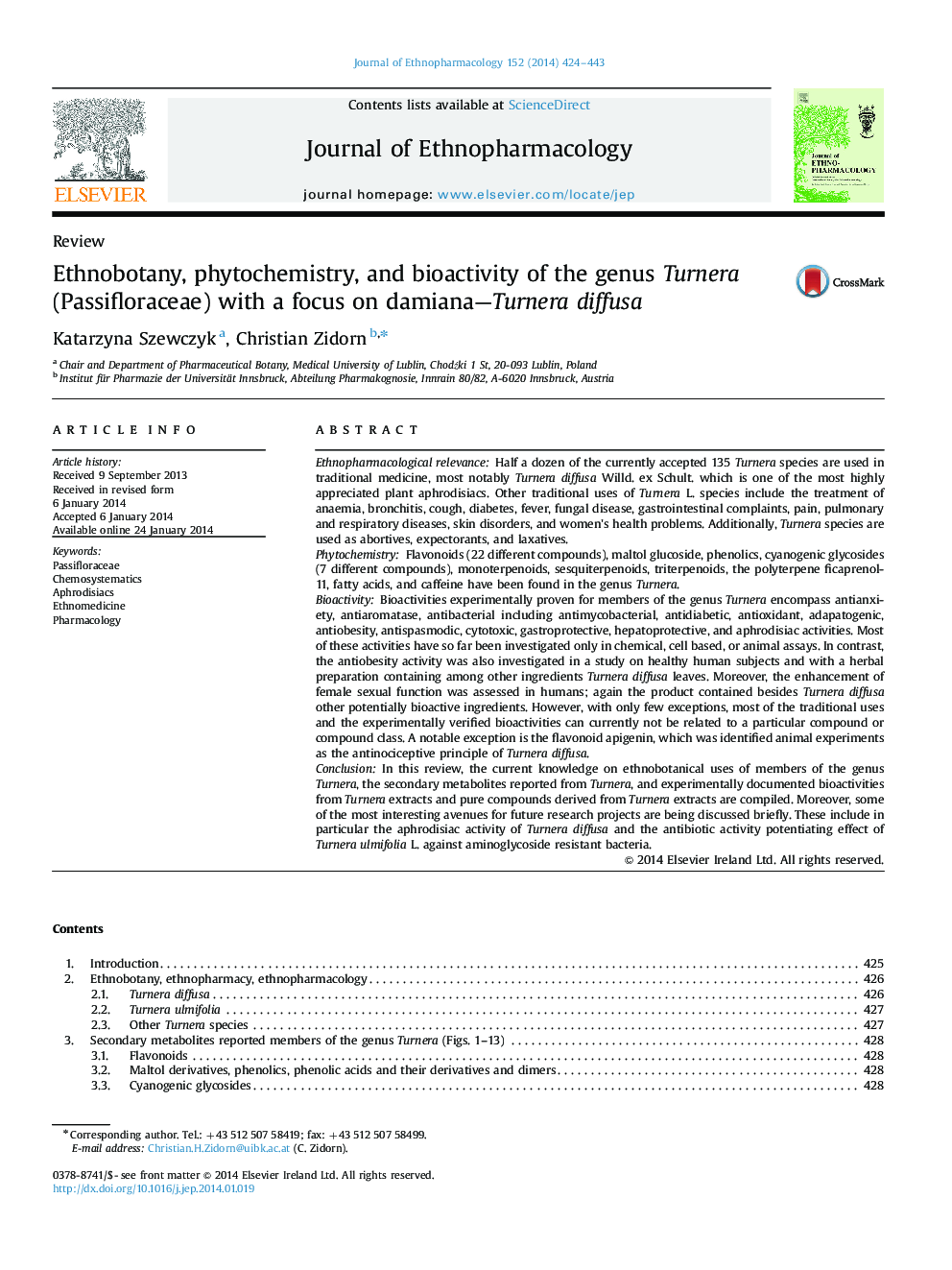| کد مقاله | کد نشریه | سال انتشار | مقاله انگلیسی | نسخه تمام متن |
|---|---|---|---|---|
| 2545401 | 1123953 | 2014 | 20 صفحه PDF | دانلود رایگان |

Ethnopharmacological relevanceHalf a dozen of the currently accepted 135 Turnera species are used in traditional medicine, most notably Turnera diffusa Willd. ex Schult. which is one of the most highly appreciated plant aphrodisiacs. Other traditional uses of Turnera L. species include the treatment of anaemia, bronchitis, cough, diabetes, fever, fungal disease, gastrointestinal complaints, pain, pulmonary and respiratory diseases, skin disorders, and women׳s health problems. Additionally, Turnera species are used as abortives, expectorants, and laxatives.PhytochemistryFlavonoids (22 different compounds), maltol glucoside, phenolics, cyanogenic glycosides (7 different compounds), monoterpenoids, sesquiterpenoids, triterpenoids, the polyterpene ficaprenol-11, fatty acids, and caffeine have been found in the genus Turnera.BioactivityBioactivities experimentally proven for members of the genus Turnera encompass antianxiety, antiaromatase, antibacterial including antimycobacterial, antidiabetic, antioxidant, adapatogenic, antiobesity, antispasmodic, cytotoxic, gastroprotective, hepatoprotective, and aphrodisiac activities. Most of these activities have so far been investigated only in chemical, cell based, or animal assays. In contrast, the antiobesity activity was also investigated in a study on healthy human subjects and with a herbal preparation containing among other ingredients Turnera diffusa leaves. Moreover, the enhancement of female sexual function was assessed in humans; again the product contained besides Turnera diffusa other potentially bioactive ingredients. However, with only few exceptions, most of the traditional uses and the experimentally verified bioactivities can currently not be related to a particular compound or compound class. A notable exception is the flavonoid apigenin, which was identified animal experiments as the antinociceptive principle of Turnera diffusa.ConclusionIn this review, the current knowledge on ethnobotanical uses of members of the genus Turnera, the secondary metabolites reported from Turnera, and experimentally documented bioactivities from Turnera extracts and pure compounds derived from Turnera extracts are compiled. Moreover, some of the most interesting avenues for future research projects are being discussed briefly. These include in particular the aphrodisiac activity of Turnera diffusa and the antibiotic activity potentiating effect of Turnera ulmifolia L. against aminoglycoside resistant bacteria.
Figure optionsDownload high-quality image (349 K)Download as PowerPoint slide
Journal: Journal of Ethnopharmacology - Volume 152, Issue 3, 28 March 2014, Pages 424–443